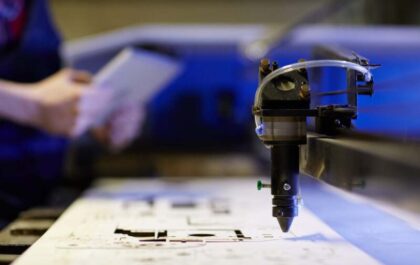Table of Contents
Introduction
Smoke detectors are a brilliant practical, low-cost invention thanks to their mass production. You can buy a smoke detector at an estimated cost of $7. Yet it saves thousands of lives every year. Therefore, it is recommended that every home have a smoke detector on each floor.
All smoke detectors have two essential parts: a sensor for sensing smoke and a loud electronic horn for alarm. Smoke sensors can operate with a 9V battery or a household current of 120 V.
This article will review the two most common types of smoke detectors currently in use: photovoltaic and ionized smoke.
Photovoltaic Smoke Detectors
A bell goes off when you enter a store while crossing the threshold. If you take a look, you will usually notice that it uses a light beam detector. Near the door on one side of the store is a beam of light – whether white light and a lens or a low-power laser – and on the other side is a light detector that detects light.
When you cross the light beam, you block it, then the detector senses the absence of light, and the bell rings. This same type of sensor can be used as a smoke detector. The bell will go off if the store is filled with smoke to block the light. But here lie two problems:
The Size of the Device Has Grown
Reduced sensitivity. There must be a lot of smoke for the alarm to go off, and the smoke must be so thick that it blocks the light.
The photovoltaic smoke detector uses light differently. Inside the smoke detector are a light and a sensor, one positioned at a 90-degree angle relative to the other.
Naturally, light emanates from its source – on the left, for example – and crosses directly without hitting the sensor. However, if there is smoke, the smoke particles scatter the light, and a little light falls on the sensor:
- The trumpet in the smoke detector then goes off.
- Electromagnetic detectors are effective in sensing smoke-high fires, such as furniture combustion.
Ionization Smoke Detectors (Ionizing Radiation)
To detect the presence of smoke, ionization smoke detectors use an ionization chamber and a source of ionizing radiation. This type of smoke detector is more common, less expensive, and more efficient at detecting little smoke.
The ionization detector contains a small amount of americium-241 (AM). The radioactive element americium has a half-life of 432 years and is a good source of alpha molecules.
If we want to talk about the amount of americium in the detector in another way, it can be said that a typical sensor contains 0.9 Korean microcores of americium-241. The Korean is a unit of measurement for nuclear material. If you hold 1 Korean of a substance in your hand, you have an amount of material subject to 37 billion nuclear transformations every second.
It means that 37 billion atoms from the sample decompose and emit a nuclear radiation molecule like alpha molecules every second. Therefore, 1 g of radium produces approximately 1 Korean element of atomic activity.
Lonization Detectors: Lonization Chamber
The structure of the ionization chamber is straightforward, consisting of two plates with a voltage across them, along with a radioactive source of ionizing radiation, such as:
Alpha molecules produced by the element americium ionize oxygen and nitrogen atoms present in the air of the chamber. Ionization means removing an electron from an atom. Grabbing electron results in a free, negatively charged electron and a bit that lacks an electron, i.e., positively charged.
A plate with a positive voltage attracts a negative electron, and a container with a negative voltage attracts a positive atom. The electronics in the smoke detector sense the tiny amount of electric current that these electrons and ions are moving towards the plates represent.
When smoke enters the ionization chamber, it distorts this current, as smoke particles bind to ions and neutralize them. The smoke detector senses the decrease in current between the two plates and releases the trumpet.
The word “nuclear radiation” may sound like sirens, but the amount of radiation in a smoke detector is minimal, and impenetrable alpha rays dominate it. The americium in the smoke detector is dangerous only when inhaled. You don’t want to mess with the smoke detector, so the americium doesn’t spread in the air.
- Now, let’s take a look inside the ionized smoke detector.
- It is how the exterior of a typical smoke detector looks.
When you remove the lid, the smoke detector structure is straightforward. The device consists of a circular plate, an ionization chamber – the silver cylinder above the right of the following image – and an electronic trumpet, the copper cylinder below the right of the next image:
And the Lower Side of the Painting
The ionization chamber is an aluminium case containing the ionization source. It is possible to note that the issue has openings that allow airflow. The case itself represents a negative plate for the ionization chamber.
Under the case, there is a ceramic stand containing the positive plate of the ionization chamber. Beneath this plate is the source of ionization, which must be handled carefully.
Related posts
Featured Posts
Exploring Advanced Techniques in the Laser Engraving Machine: 3D, Texturing, and Multi-Layered Designs
Many industries have spoken for the laser engraving machine because of its results and versatility. But recently, many advancements have…
Benefits of Vitamin D
Introduction One cannot live without the benefits of vitamin D because its virtues are essential for good health. But do…


